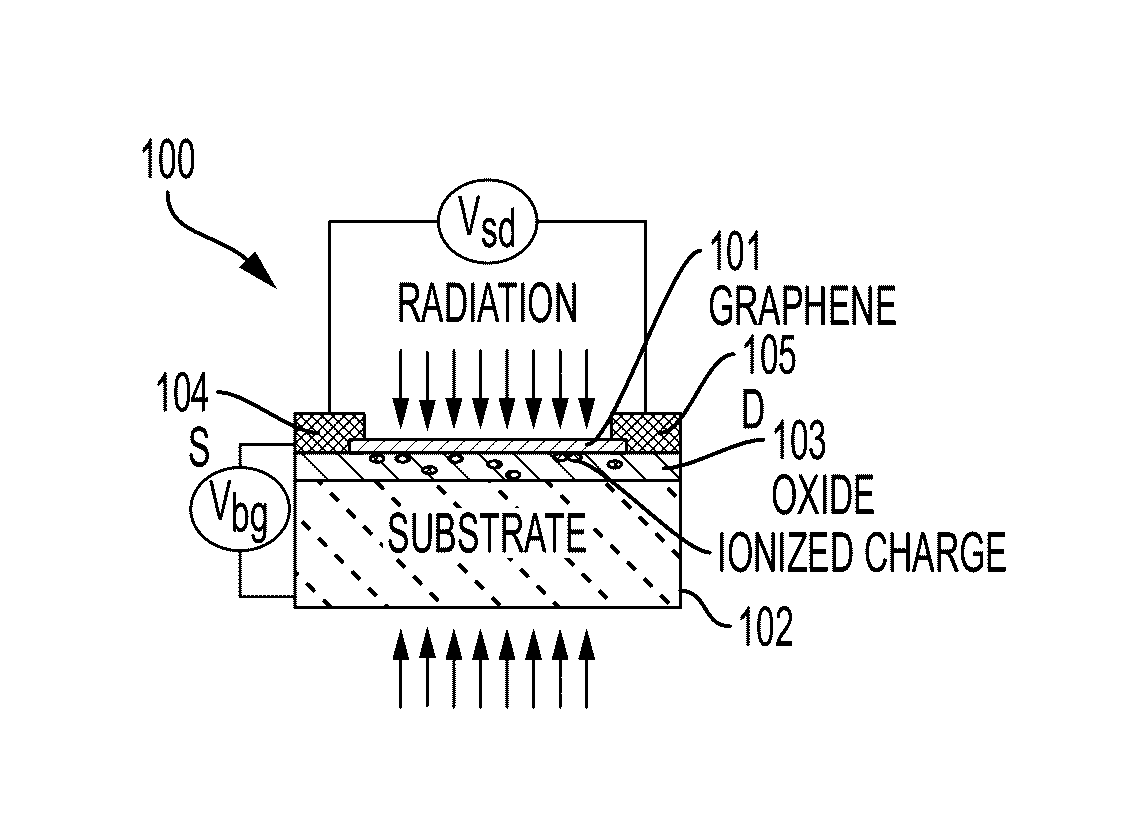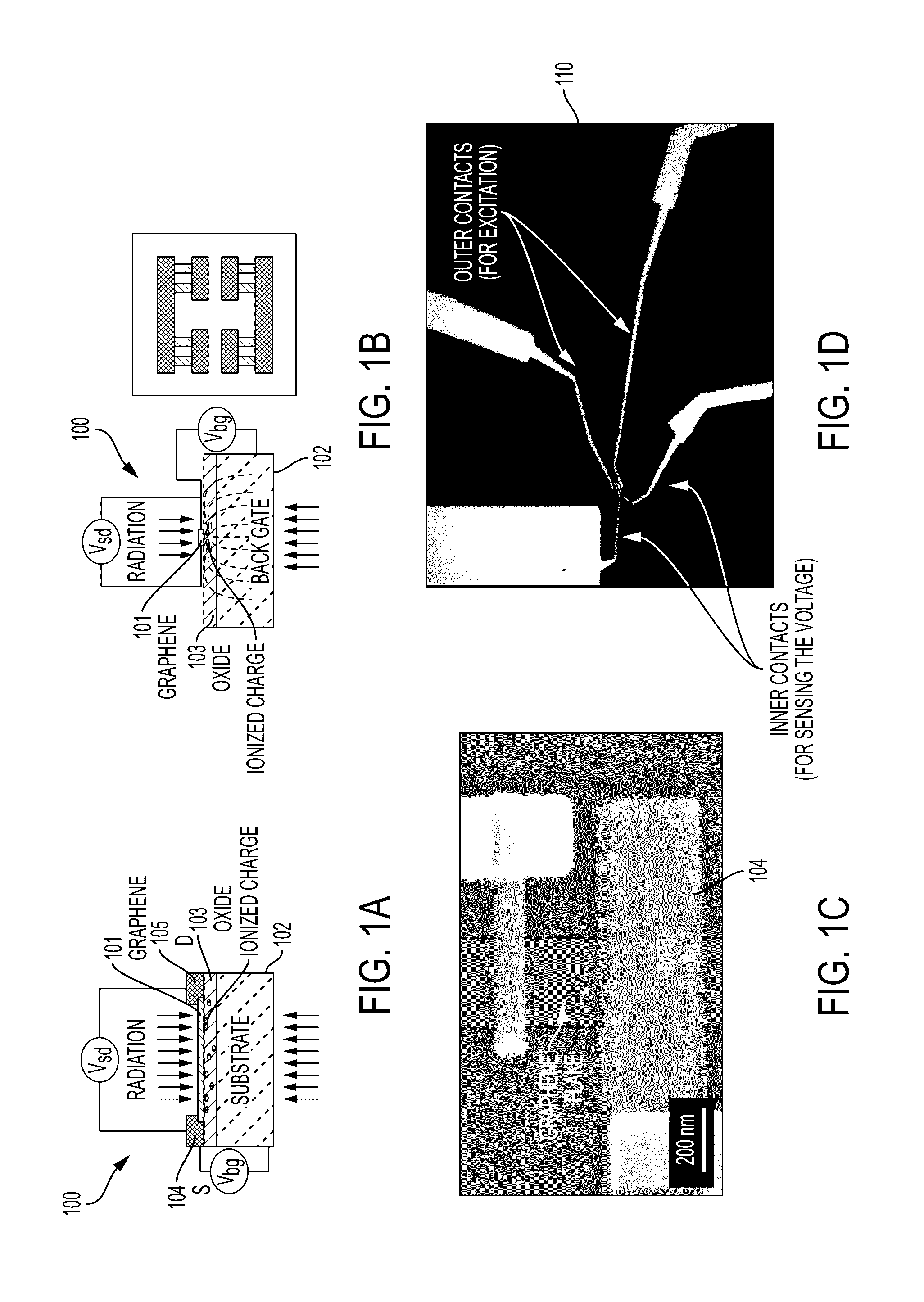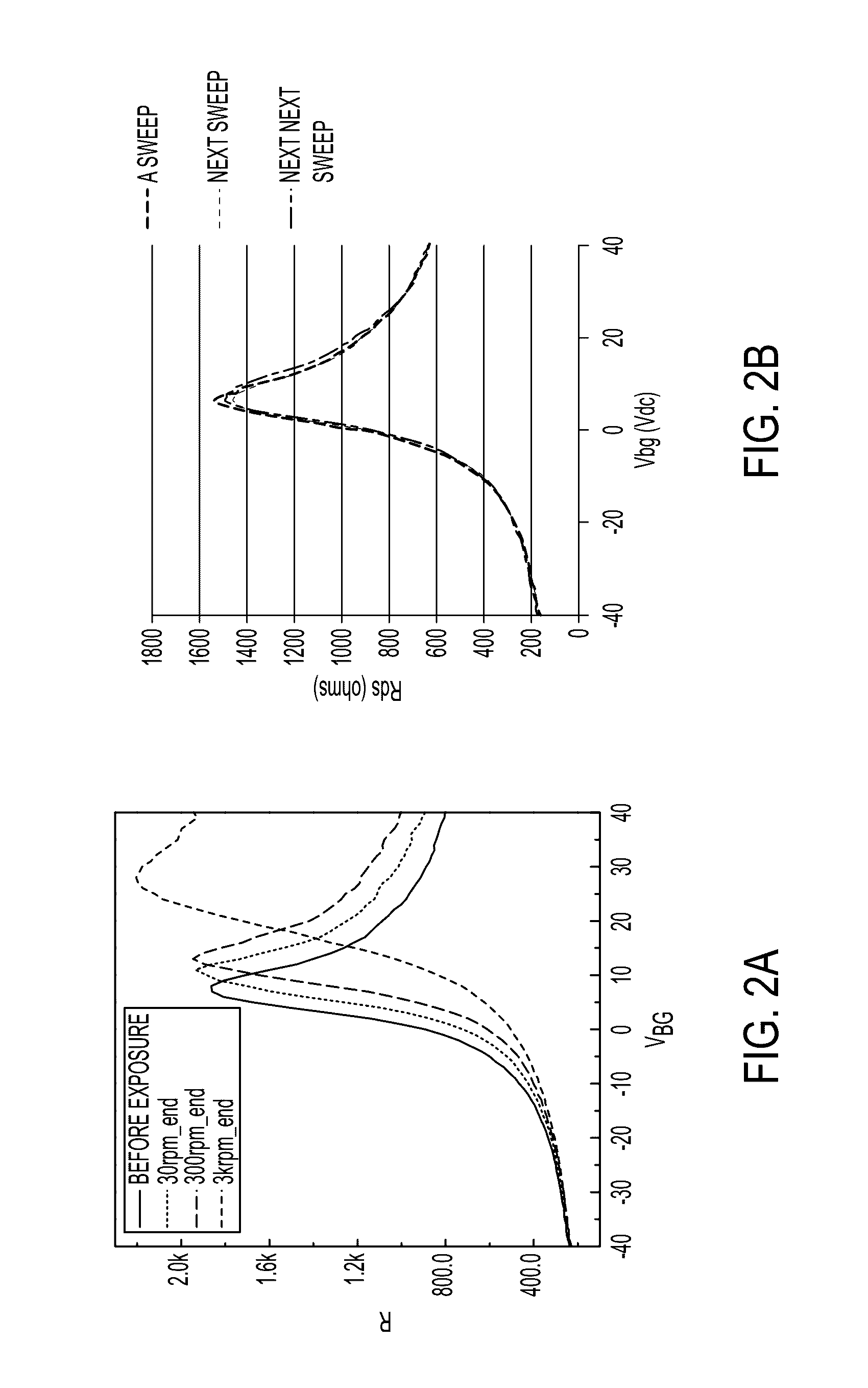Graphene field effect transistor for radiation detection
a transistor and radiation detection technology, applied in semiconductor devices, material analysis, instruments, etc., can solve problems such as visual impairment, damage to the central nervous system, and based on rigid materials, and achieve the effects of high sensitivity, low power, and high sensitivity
- Summary
- Abstract
- Description
- Claims
- Application Information
AI Technical Summary
Benefits of technology
Problems solved by technology
Method used
Image
Examples
Embodiment Construction
[0037]The present invention relates to a graphene field effect transistor (GFET) based radiation sensor (RS) for a variety of radiation detection requirements, including manned spaceflight missions.
[0038]The ability of graphene field effect transistors to detect electromagnetic radiation, such as X-rays, gamma rays, and photons, has been demonstrated in current scientific literature. In all of these detections, a semiconductor substrate is used as a radiation absorber for charge collection and a large area graphene flake channel (see FIG. 1C, for example) acts as a sensor to detect the ionization produced by the absorbed radiation.
[0039]In the present invention, the graphene field effect transistor (FET) based radiation sensor (RS) detects radiation by sensing electrical field changes produced by the radiation-generated charged particles in the absorber. The resulting changes in the graphene resistance are particularly large near the “Dirac point” of the sharp peak in resistance as ...
PUM
| Property | Measurement | Unit |
|---|---|---|
| thickness | aaaaa | aaaaa |
| temperature | aaaaa | aaaaa |
| distance | aaaaa | aaaaa |
Abstract
Description
Claims
Application Information
 Login to View More
Login to View More - R&D
- Intellectual Property
- Life Sciences
- Materials
- Tech Scout
- Unparalleled Data Quality
- Higher Quality Content
- 60% Fewer Hallucinations
Browse by: Latest US Patents, China's latest patents, Technical Efficacy Thesaurus, Application Domain, Technology Topic, Popular Technical Reports.
© 2025 PatSnap. All rights reserved.Legal|Privacy policy|Modern Slavery Act Transparency Statement|Sitemap|About US| Contact US: help@patsnap.com



